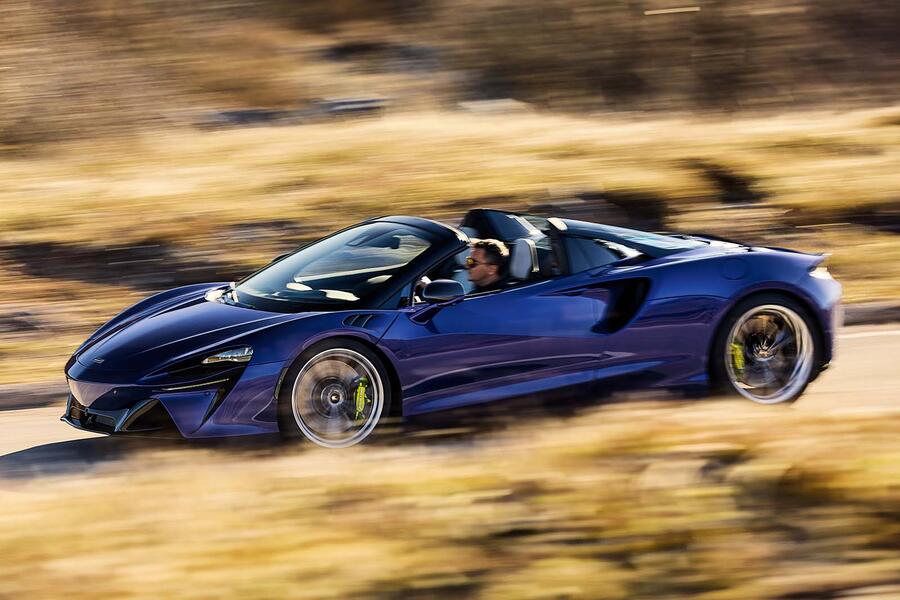When McLaren Automotive chief design officer Tobias Sühlmann is looking for inspiration, he doesn’t have to go far to find it: he just needs to go out for a sandwich.
“Every day when I go for lunch, I walk along this boulevard and suck in the history of the brand, and that’s something we need to think of for the future,” he says, gesturing along the main atrium of the McLaren Technology Centre in Woking.
Along its vast length there sits an incredible display of machinery: race cars include Bruce McLaren’s M8D Can-Am monster, Alain Prost’s Formula 1 title-winning MP4/2B and Lando Norris’s current MCL38, while road cars range from the fabled F1 and the transformative MP4-12C to the Speedtail and Elva.
The machinery is a reminder of McLaren’s rich heritage – and Sühlmann is using it to chart a new direction for the future. “I ask my team to walk down here, find some details and then develop a new interpretation of them,” he says. “When you see the boulevard, you get inspired – and you realise you can do a lot with this brand.”
![]()
This line of cars also explains why Sühlmann was lured back to McLaren – he served as Special Projects design chief in 2021, working on the virtual-racer-made-real Solus GT – from his role as Bentley’s head of exterior design last September.
“I’ve worked at a lot of companies, from big manufacturers to smaller firms,” the German says of a career that has also included stops at Volkswagen, Bugatti and Aston Martin. “McLaren is my dream company.”
Sühlmann’s return to the supercar maker comes at a pivotal moment, with the McLaren Group now owned fully by the Bahraini state investment fund after recent financial troubles.











Join the debate
Add your comment
McLaren Automotive seems to be very conflicted or confusing. The company's financial position and long-term future always seem to be in question. The cars that it produces provoke a large range of reactions and opinions. I don't think that moving into SUVs will help the brand. The need to ultimately move away from ICE production raises questions about the brand's long-term future. That's also true for many other car brands associated with high performance or sports cars.
So, it's all about the money end of McLaren, the big check hypercars, no mention of SUV or other EV transport, he only works for McLaren or should I say the group who own McLaren.